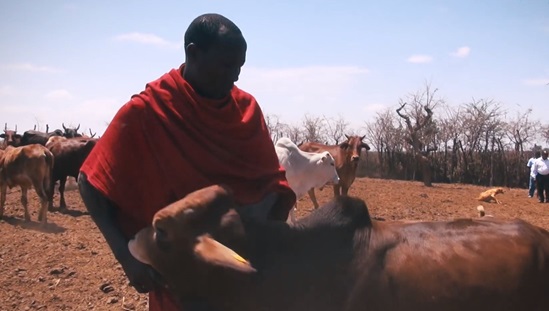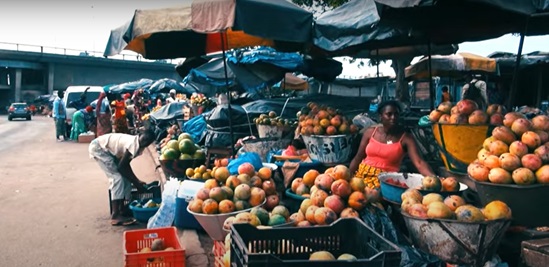Achievements
New knowledge and evidence on the impacts of changing VBD risks, environmental exposure and social vulnerabilities under climate change and associated health outcomes. These are assessed and characterized under various environmental, social and climatic conditions in Africa. New knowledge and evidence generated from the projects are detailed in scientific papers that have been published. Additional information can be Achievements obtained from the online knowledge-sharing platform.
Decision-making and support processes and tools for VBDs and adaptation to climate change interventions have been developed, for example, VBD and climate change adaptation interventions: Tools to enable access to and use of climate services for health were developed (Ceccato P et al., 2018, and Thomson M et al., 2018).
For the research initiative, several methodologies using remote sensing to monitor climate variability, environmental conditions, and their impacts on the dynamics of VBDs were developed. The research initiative demonstrated how remotely-sensed data can be accessed and analyzed, and how they can be integrated into research and decision-making processes for mapping risks, creating early warning systems (EWSs), and evaluating the impacts of disease-control measures.
This research initiative recognized that one of the most pressing needs for operational health agencies is the strengthening of current disease control efforts to bring down disease rates and manage short-term climate change risks. This may, in turn, increase resilience to long-term climate change.
To address this need, TDR collaborated with the International Research Institute for Climate and Society (IRI) at Columbia University to develop research tools and networks. Researchers, policy- and decision-makers, public health practitioners, and communities from lower- and middle-income disease-endemic African countries received capacity building and access to and use of climate services for health. The following is a brief list of some of the learning and capacity-building activities:
- Understanding and establishing the relationship between diseases and climate by creating spatial and temporal stratification of the diseases and population risk (i.e. risk mapping);
- Estimating the seasonality of the disease and timing of intervention; and
Developing and implementing frameworks for EWSs for real-time monitoring real-time and forecasting the risks of disease transmission based on climate and environmental factors.
When working with VBDs, researchers and decision-makers often face a lack of quality climate data required for optimal targeting of the intervention and surveillance. While raw climate data (station- and satellite-generated) can be accessed freely online, this is not always readily available, especially in Africa; and whenever data is available, processing the data appropriately requires technical skills. Thus, ease of access should not be mistaken for ease of analysis since the datasets are highly complex and require complex analysis, especially when applied to decision-making. Various core tools have been developed to improve data accessibility and analysis for use by decision-makers and researchers across all projects supported under this research initiative.
Networks can support the development and use of decision-making and support systems for better management of VBD risks and vulnerabilities related to climate change in Africa. This networking engages cadres of young researchers from African countries and aims to increase skills development to identify appropriate research topics, and obtain, manage and use social, environmental and climate information in VBD research (see Annex 5 for a list of research published).
A Climate Data Library as an integrated knowledge system, organized as a library, and containing a collection of both locally held and remotely held datasets for earth observations.
Smartphone applications were developed for:
- Integrating satellite images on precipitation, temperature and water bodies with local data on habitats of tsetse flies and occurrence of cattle trypanosomiasis. This application allowed the Maasai community and local officials to access high-spatial resolution images and extract time-series analysis for mapping the risks of trypanosomiasis in the Maasai villages; and
- Collecting health data geo-referenced with pictures of the environment, data of vector breeding sites, data from socioeconomic and health surveys. This application is based on Open Data Kit (ODK)[1] and can create decision support for researchers, communities and public health practitioners to build multimedia-rich customized mapping tools.
Online Course for Gender-Based Analysis in Climate Change and Vector-Borne Disease Research. Developed in collaboration with The Department of Social and Behavioural Sciences at the University of Ghana (led by Dr Phyllis Dako-Gyeke), this course adopts innovative global classroom approaches to provide a holistic and detailed understanding of gender-related roles and practices between men and women and its impact on climate change and vector-borne diseases, and vice versa. The course begins with an introduction to the definition of gender, gender terms and concepts, as distinct from biological differences between males and females. Participants will also be introduced to the various social, economic and health impacts of climate change and VBDs, and appropriate strategies for mitigation. Furthermore, the course introduces participants to various gender analysis frameworks and demonstrates how these frameworks could be applied to the domain of VBDs, climate change and public health programming.
[1] The Open Data Kit community produces free and open-source software for collecting, managing, and using data in resource-constrained environments. It allows the collection of data offline and submit the data, when internet connectivity is available.




